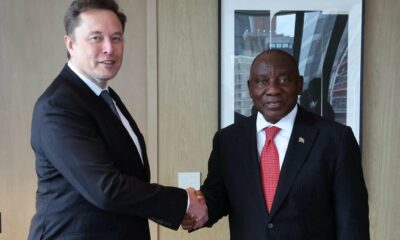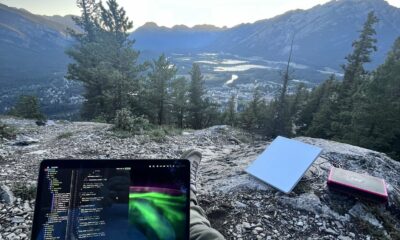Tech
Why Starlink Isn’t the Silver Bullet for South Africa’s Rural Connectivity Crisis

When Starlink hit South African headlines, it came wrapped in buzzwords and big promises. SpaceX’s satellite internet system, spearheaded by Elon Musk, was hailed as a revolutionary fix for rural connectivity issues — a way to bring fast, reliable internet to places where signal towers had never set foot.
But here on the ground, where potholes and paper trails rule the road, that dream has started to unravel. Industry players, local operators, and even trade unions are sounding the alarm: Starlink might just be a shiny distraction from the real problem — government red tape.
Slower speeds, deeper frustration
For many South Africans living outside major cities, poor internet isn’t just an inconvenience — it’s a daily wall. A 2023 study by Opensignal revealed that smartphone users in rural areas experience a 14.4% slower download speed and a staggering 29.2% slower upload speed than those in urban centers.
That’s not just slower Netflix. It’s delayed school assignments, broken emergency communications, and small businesses unable to process payments. In places like the Northern Cape and Limpopo, signal dropouts are common, sometimes lasting hours. And it’s not just the remote hillsides — even peri-urban areas are feeling the squeeze.
Not a tech problem, but a paperwork problem
According to industry insiders, the heart of the crisis isn’t a lack of technology. It’s a lack of urgency — buried under paperwork.
Sean Shipalana, director of Moropa Site Solutions, knows the grind all too well. His company builds towers in rural provinces like Limpopo, North-West, and the Eastern Cape. He says it can take more than a year just to get the permits to build a single cell tower.
And it’s not just one permit. Try juggling approval from the Civil Aviation Authority, environmental clearances, municipal zoning, and planning documents. Every step has its own timeline — often dragging on for three or four months at a time. The result? A year-long bottleneck just to break ground.
“Even when all the paperwork is perfect, interdepartmental delays and lack of coordination stall progress. Smaller municipalities simply don’t have enough people to process all the applications,” Shipalana explains.
Add to that shifting requirements — like new obstacle assessments mandated by the CAA — and the process becomes a maze that even experienced players struggle to navigate.
Communities stuck in limbo
For communities waiting on these towers, the delays are not just bureaucratic—they’re deeply personal.
Students can’t download learning materials. Entrepreneurs can’t swipe payments. CCTV cameras and emergency response systems fail when the signal cuts out.
It’s no wonder that frustrations run high. When network operators eventually cancel tower leases because the permits take too long, it’s the residents who suffer most.
“We need smarter systems, faster decisions, and better interdepartmental communication,” says Shipalana. “This isn’t just about telecoms. It’s about fairness, opportunity, and building a South Africa where no one’s left offline.”
The Starlink threat to local jobs
While Starlink’s promise of satellite internet from space may sound futuristic, some in the industry see it as a threat to existing jobs and homegrown infrastructure.
Unlike traditional networks that require teams of technicians, engineers, and maintenance staff on the ground, Starlink could sideline much of that workforce. The service runs with minimal local infrastructure, raising fears among trade unions about job losses and a further erosion of South African tech autonomy.
Political analyst Pule Monama is particularly concerned about what happens when foreign-owned companies like Starlink dominate the space. “We often celebrate the jobs they create without asking: Are these sustainable? Will local workers be upskilled? Or will they be left stranded if things go south?”
He points to a troubling pattern of foreign companies exiting South Africa and leaving behind economic wreckage. “We need to think beyond the hype. True development means building local capacity, not just renting access from overseas.”
So, what’s the real solution?
The path to better rural internet isn’t floating in low-Earth orbit. It’s right here on the ground — buried under red tape.
South Africa needs faster, more coordinated permitting systems. It needs municipalities that are equipped to handle applications swiftly. And it needs government departments that talk to each other — and act with urgency.
Yes, Starlink may have a role to play. But it should complement local infrastructure, not replace it. The real future lies in empowering South African companies to deliver for their own people, not outsourcing the country’s digital destiny.
A call to connect
If South Africa is serious about closing the digital divide, it needs to stop spinning in circles. It’s time to simplify the systems, streamline the permits, and support the people already working to bring connection to our most underserved areas.
Because this isn’t just about faster downloads or clearer Zoom calls. It’s about creating a country where every learner, entrepreneur, and family can thrive — no matter their postal code.
Let’s cut the red tape, not the signal.
{Source: The Citizen}
Follow Joburg ETC on Facebook, Twitter , TikTok and Instagram
For more News in Johannesburg, visit joburgetc.com



























